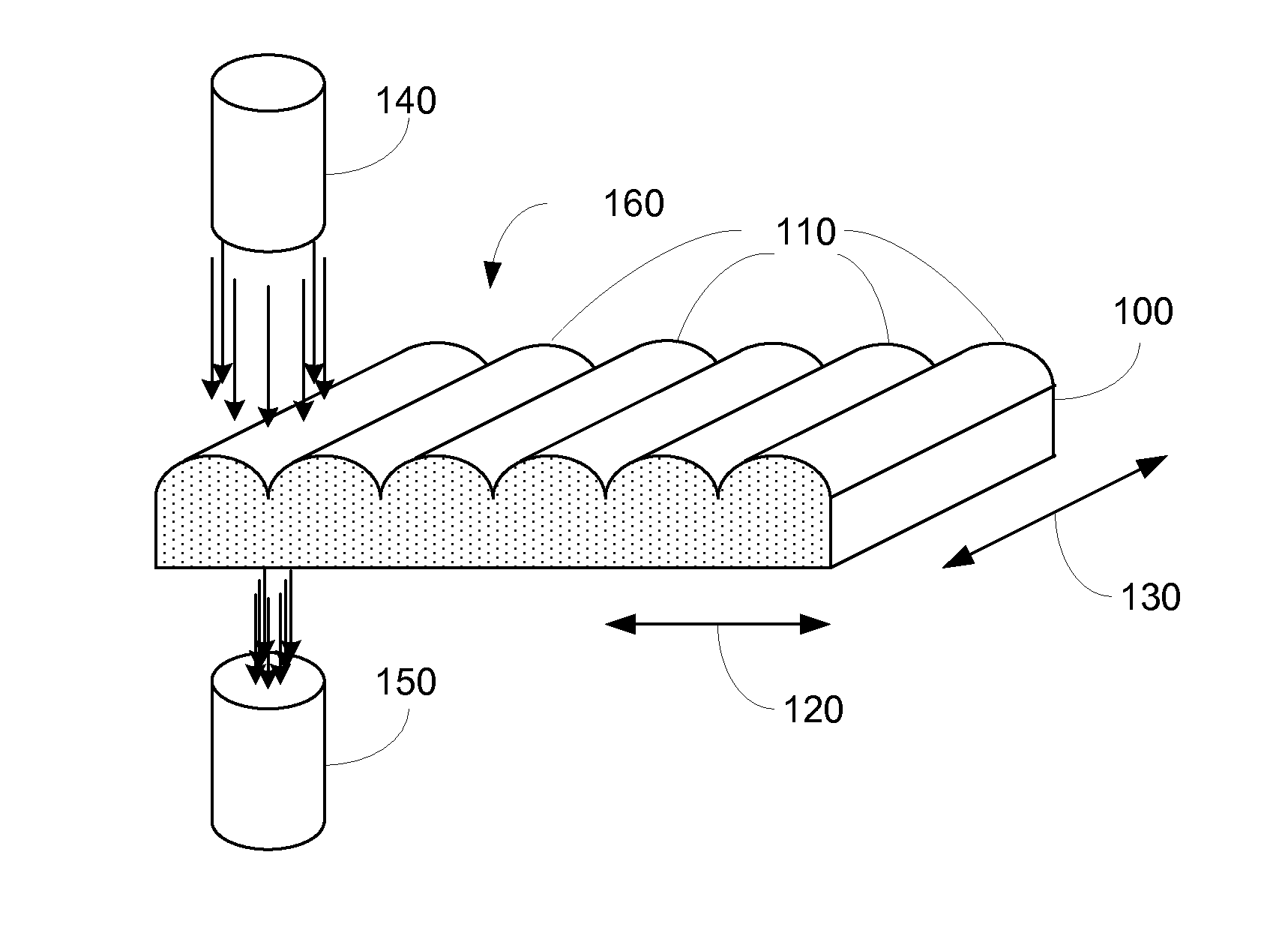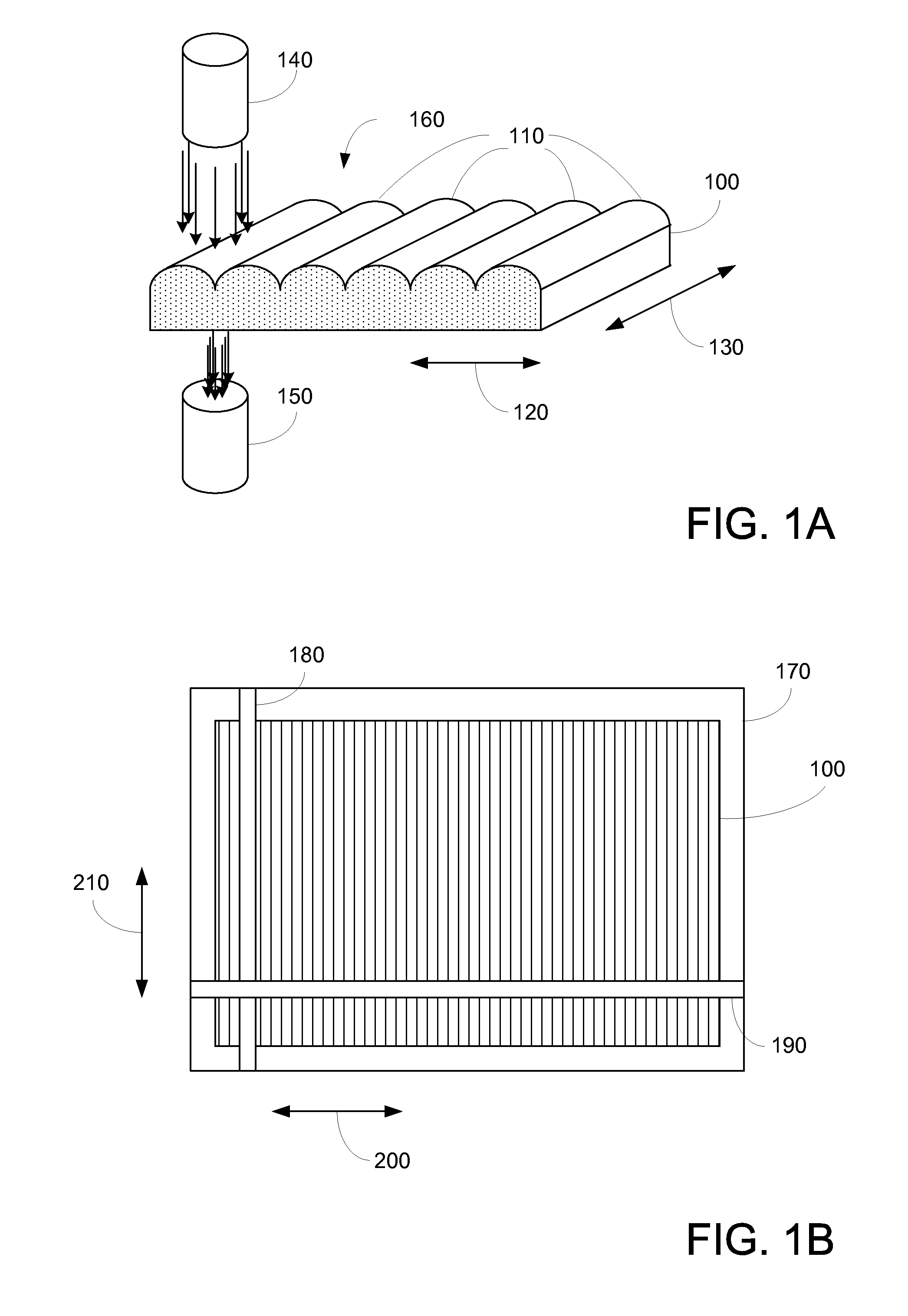System and method for determining placement of photovoltaic strips using displacement sensors
a technology of displacement sensor and photovoltaic strip, which is applied in the direction of pv power plants, controlling lamination, other domestic articles, etc., can solve the problems of reducing the efficiency of photovoltaic strips. , to achieve the effect of maximizing the capture of solar ligh
- Summary
- Abstract
- Description
- Claims
- Application Information
AI Technical Summary
Benefits of technology
Problems solved by technology
Method used
Image
Examples
Embodiment Construction
[0019]FIGS. 1A-B illustrate various aspects according to embodiments of the present invention. More specifically, FIGS. 1A-B illustrate apparatus for determining concentration characteristics of a sheet of material 100.
[0020]In FIG. 1A, an embodiment of a sheet of transparent / translucent material 100 is shown. As can be seen, sheet 100 may include a number of concentrating elements 110 in a first direction 120. In one example, there are approximately 175 concentrating elements across sheet 100, although in other examples, the number of concentrating elements may vary. In various examples, the nominal pitch of concentrating elements 110 ranges from approximately 5.5 mm to 6 mm.
[0021]In various embodiments, sheet 100 may be manufactured as a sheet of extruded material, accordingly, the concentrating elements may extend in a second direction 130, as shown. In other embodiments, the concentrating elements may vary in second direction 130.
[0022]In various embodiments of the present inven...
PUM
| Property | Measurement | Unit |
|---|---|---|
| temperature | aaaaa | aaaaa |
| angles | aaaaa | aaaaa |
| width | aaaaa | aaaaa |
Abstract
Description
Claims
Application Information
 Login to View More
Login to View More - R&D
- Intellectual Property
- Life Sciences
- Materials
- Tech Scout
- Unparalleled Data Quality
- Higher Quality Content
- 60% Fewer Hallucinations
Browse by: Latest US Patents, China's latest patents, Technical Efficacy Thesaurus, Application Domain, Technology Topic, Popular Technical Reports.
© 2025 PatSnap. All rights reserved.Legal|Privacy policy|Modern Slavery Act Transparency Statement|Sitemap|About US| Contact US: help@patsnap.com



